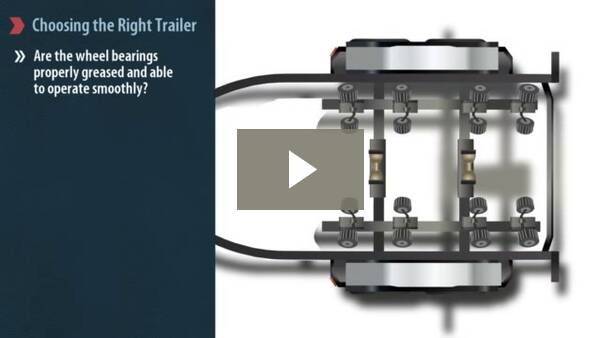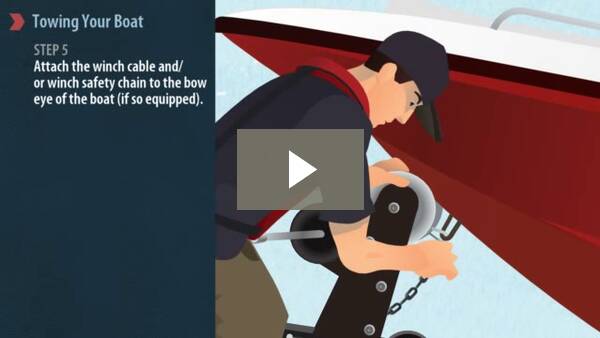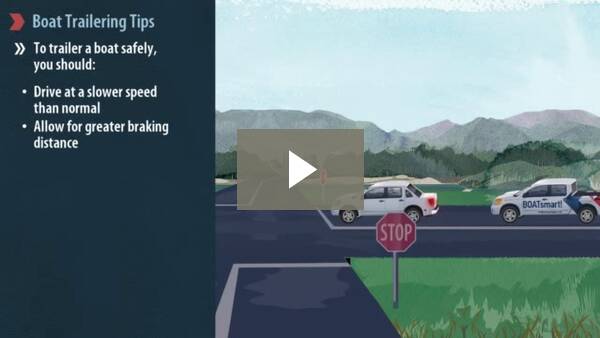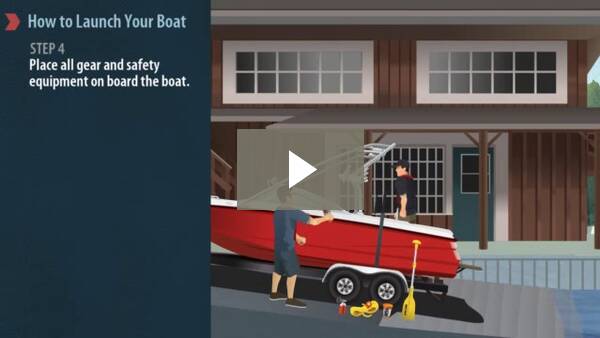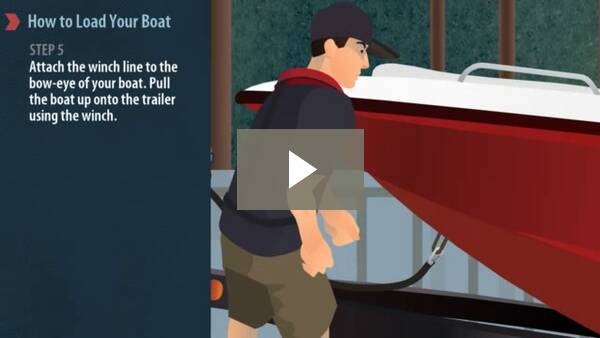Towing and Boat Trailering
Boat trailering safely isn’t difficult. It’s a matter of choosing the right towing equipment, using common sense when loading and unloading your boat and being confident with the techniques for driving safely with a trailer in tow.
Choosing the Right Boat Trailer
Federal law classifies boat trailers according to the maximum weight they can support when they’re fully loaded with gear, fuel and equipment.
The trailer capacity plate indicates the Gross Vehicle Weight Rating (GVWR):
- Class 1: GVWR- 2000 lbs.
- Class 2: GVWR- 3500 lbs.
- Class 3: GVWR- 5000 lbs.
- Class 4: GVWR- 5000 lbs. or more
The Gross Axle Weight Rating (GAWR) can also be found on the trailer capacity plate and indicates the minimum tire rating for the load that the trailer can carry. This means that a heavy-duty load will likely require heavy-duty tires!
Federal law requires your boat trailer to have:
- Current state registration.
- Current state license plates.
- Working trailer lights.
Note: If the boat is more than 8.5 feet wide, it may require a special permit from your state’s Department of Transportation before it can be transported on the highway.
To determine which style of trailer is right for you, consider the following:
- Is the width and length of your trailer suitable for the size of your boat?
- Is the weight capacity of the trailer suitable for the weight of the boat?
- Is the towing capacity of your vehicle suitable for the weight of your boat?
- Do all of the operating lights work properly?
- Are the wheel bearings properly greased and able to operate smoothly?
- Does the coupler (located at the front of the trailer) match the size of your vehicle’s hitch ball?
- Is the trailer equipped with safety chains in case the hitch fails?
- Does your trailer require trailer brakes?
Safe Boating Tip:
Loading, towing and launching your boat safely takes both patience and knowledge. Practice driving and backing up with a loaded trailer in a controlled environment (like an empty parking lot) before you hit the highway.
Towing Your Boat
Step 1) Before attaching your trailer to the vehicle, make sure that the trailer is properly balanced and level.
Step 2) Position the vehicle or trailer so that the hitch ball is directly below the trailer’s coupler, then slowly lower the trailer.
Step 3) Securely fasten the tongue coupler and lock the trailer latch using a cotter pin or lock.
Step 4) Using tie down straps, securely fasten the boat to the trailer.
Step 5) Attach the winch cable and/or winch safety chain to the bow eye of the boat (if so equipped).
Step 6) Ensure that the trailer’s safety chains are securely fastened to the hitch. Chains should be long enough to accommodate tight turns but short enough so that the tongue of the trailer cannot touch the road if it becomes dislodged from the hitch.
Step 7) Fasten the trailer’s lighting harness to your vehicle.
Boat Trailering Tips
When driving with a trailer in tow, remember that your vehicle is longer and heavier than it was before the trailer was attached. To trailer a boat safely, you should:
- Drive at a slower speed than normal.
- Allow for greater braking distance.
- Accelerate slowly.
- Turn using a wider radius to allow room for the trailer.
- Use extra caution if driving in high wind, heavy rain, fog or icy conditions.
Launching your Boat
Step 1) Make a visual check of the launch area: Is the ramp deep enough to launch your boat? Are there any overhead wires or obstructions?
Step 2) Remove the tie-down straps and unplug the trailer lights from your vehicle.
Step 3) Ensure the bilge drain plug is in place.
Step 4) Place all gear and safety equipment onboard the boat.
Step 5) Ensure the winch is connected to the bow of the boat.
Step 6) Attach a bow and stern line to the boat.
Step 7) Slowly back the trailer into the water until the motor is submerged.
Step 8) Test the motor by starting it and allowing it to warm up.
Step 9) Shut down the motor and continue backing the trailer into the water until the boat begins to float.
Step 10) Use the bow and stern lines to guide the boat off the trailer and then remove the vehicle from the ramp.
Loading your Boat
Step 1) Secure the boat at the dock.
Step 2) Back the trailer into the water until it’s about 2/3 submerged.
Step 3) Turn off your vehicle and engage the emergency brake.
Step 4) Position the boat on the trailer using the bow and stern lines—never drive your boat onto the trailer.
Step 5) Attach the winch line to the bow-eye of your boat. Pull the boat up onto the trailer using the winch.
Step 6) Ensure the boat is properly seated and balanced on the bunks or rollers.
Step 7) Once the boat is in position, lock the winch and attach the safety chains (if so equipped).
Step 8) Remove your vehicle and trailer from the ramp.
Step 9) Once parked, attach the trailer lights and check that they’re working properly.
Step 10) Remove the boat’s bilge drain plug.
Step 11) Secure the boat using tie-down straps before driving off.




